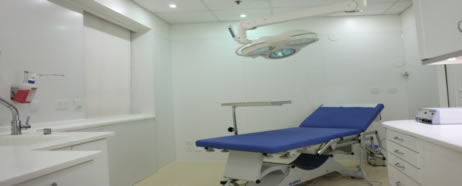 | Central Vascular Clinic | | 趙啟明醫生醫務所 Dr. Leo K.M. CHIU |
|  |
|
|
|
|  |
Blood supply to the brain
The two internal carotid arteries run up the side of the neck and supply blood to the front part of the brain. Another smaller set of arteries, the vertebral arteries, are located along the back of the neck and supply blood to the back of the brain.
High blood pressure, diabetes, tobacco use and high blood cholesterol cause deposition of atheromatous plaque and narrowing (stenosis) of the carotid artery. Blood jet through the stenosis with an increased speed and may break off pieces of plaque into the bloodstream. That blocks the smaller arteries and stops the blood from supplying the cerebral tissue causing stroke.
.jpg)
What is stroke?
A stroke occurs when blood supply to the brain is interrupted by a blood clot or when a blood vessel bursts. Brain cells deprived of fresh blood (also known as ischemia) will be damaged. If ischaemia last for more than a few minutes, the brain cells die (known as infarction). This could cause permanent loss of brain function (stroke), or a "transient ischemic attack" (TIA), which implies a temporary interruption of brain function which recovers within 24 hours.
Symptoms of stroke
Stroke happens suddenly, as inability to normally move an arm or leg with sudden loss of balance or coordination. The inability to feel (numbness) is also a common symptom. If the speech centre in the brain is affected speech becomes jumbled. Sometimes there is transient loss of vision of part of the visual field (Amaurosis Fugax).
Who need treatment?
Those with a tight narrowing of the internal carotid artery and a recent history of a minor stroke, TIA or amaurosis fugax are at high risk of a major stroke, particularly during the first 3 months after the initial event. Intervention should therefore be performed as soon as possible.
Diagnosis of carotid stenosis
Tests used to detect carotid stenosis
- Ultrasound examination is the preferred test. It shows the narrowing on screen and can also be used to study the speed of blood flow in the narrowing. Red cells have to speed up to get through the narrowed segment. Severity of narrowing can therefore be deduced from the blood flow velocity.
.jpg)
- With the use of intravenous contrast, artery can also be visualized by magnetic resonance (MRA) or computerized tomographic angiogram CTA.
- Carotid angiogram has a small but definite risk and is only done if an intervention is planned. Under local anaesthesia the femoral artery at groin level is punctured. A catheter is threaded into the artery and directed to the neck artery under X-ray control. Contrast is then injected, the carotid arteries and the circulation to the brain are observed
What does treatment involve?
- Modification of risk factors that cause blockage of the artery. Quit smoking and control high blood pressure. Normalize blood cholesterol by diet and take cholesterol lowering agent
- Take anti-platelet agent such as aspirin.
- Further intervention (carotid endarterectomy or stenting) is recommended for individuals with severe blockages of the carotid artery to more than 70 percent.
- During carotid endarterectomy the plaque from inside of the artery is removed. The artery is carefully exposed through an incision running vertically in the side of the neck. The artery is opened, cleared of the debris and carefully sewn up again. The operation can be done under local or general anaesthetic. Normal activities can quickly be resumed after surgery.
.jpg)
- Placement of a stent (a small metallic coil) thrunder X-ray control to keep the artery open. Safety and efficacy of this procedure are continue to be studied. In special situation, such as patient with neck scarring from previous surgery or radiotherapy, stenting may be preferred.
Results of treatment
Carotid endarterectomy is a well established operation. When performed by an experienced surgeon it is safe.
- Reduces the risk of stroke from 1 in 5 to 1 in 25.
- It provides good long-term results.
- Between 1 and 3 in 100 patients will have a stroke during the operation.
- There are few side effects of the operation. Very occasionally, adjacent nerves may be damaged but most recover spontaneously.
- No limitations or alterations to lifestyle after the operation.
- Not all patients are suitable for stenting depending on the anatomy of the carotid artery.
- Short term evidence for stenting suggests it can achieve similar outcomes as surgery.
|
|
|
|
|
|